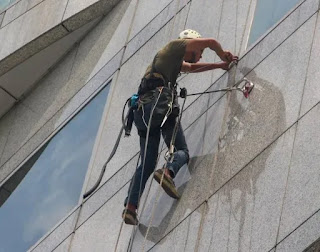Safety harnesses and lanyard inspection are essential parts of the equipment. They protect workers from fall-related injuries. Not performing the safety harness monthly inspection checklist is the leading cause of on-site accidents. Inspecting the equipment and ensuring that it is in good condition is the most important safety factor.
In almost all industries and productive sectors, the activities of maintenance and assembly of structures, for example, require rising above the surface to access work areas. Working at heights has great potential to harm workers if the appropriate preventive measures are not taken. (Work at height: key points to avoid accidents).
There are several conventional methods of fall protection,
including guardrails, handrails, fencing, and using a net. But
there are also personal fall arrest systems, especially well-known harnesses.
Harness reduces the impact of the jerk when the fall occurs, In addition, damage to the abdominal area will significantly decrease.
SAFETY HARNESS INSPECTION OSHA
Before using personal fall arrest systems, fall restraint systems and positioning device systems, all components should be inspected (including hardware, cables and positioning harnesses or full body, depending on the system used) by the manufacturer's specifications for signs of mould, wear, damage and other causes of deterioration. Defective components should be removed from service.
 |
| Safety harness |
Safety harness monthly inspection checklist
Straps:
• Cuts, nicks, or tears
• Broken fibres or cracks
• General deterioration
• Wear and abrasion
• Bright or hard spots
Hardware:
• Deformation (twisting, bending)
• Sharp or rough edges
• Rust or corrosion
• Broken/deformed grommets
• Modifications made by the user
CLEANING AND STORAGE
- Remove all dirt from the surface with a sponge soaked in running water. Squeeze the sponge dry. Apply detergent and water solution. With a vigorous front-to-back motion, work up a generous lather. Then dry with a clean cloth.
- Hang to dry, away from excessive heat, steam, or sunlight.
- Storage places must be clean, dry and protected from gases, heat, direct ultraviolet light, sunlight and corrosive elements.
DISCUSSION QUESTIONS:
- What do you do to keep the harness safe and in good condition?
- Do you regularly inspect your harness before use?
- Do you inspect your harness before wear?
- Did you ever detect any potential hazards in your harness during the inspection?
TIPS FOR THE PRESENTER:
Read the practical information talk material in advance. If you know the subject, you will feel more comfortable and confident.
Discuss the related tasks, work areas, or events for which the practical information talk is relevant to your work.
To get workers to participate, ask them questions and ask them to make comments that allow for discussion.
Review the safety checklist with workers and have hard copies available.
Visit: Safety Zone for more health and safety topics


